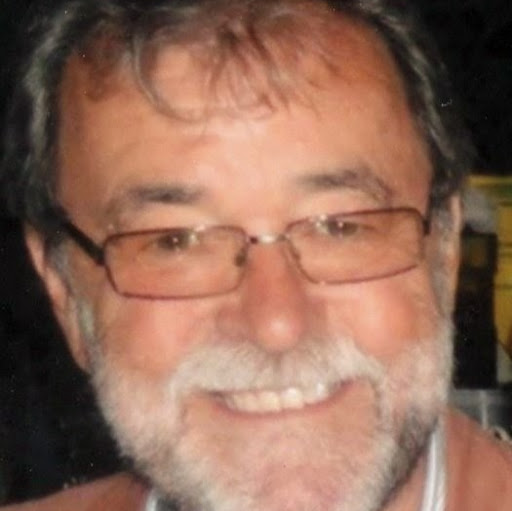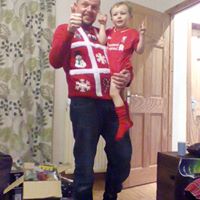Roger F Atkinson
age ~80
from Reno, NV
- Also known as:
-
- Roger Francis Atkinson
- Roger J Atkinson
- Roger S Atkinson
- Rodger F Atkinson
- Roger Atkins
- Phone and address:
-
1508 Gentry Way, Reno, NV 89502
6194411162
Roger Atkinson Phones & Addresses
- 1508 Gentry Way, Reno, NV 89502 • 6194411162
- Riverside, CA
- Orlando, FL
- Dayton, OH
- 1179 Carnelian St, El Cajon, CA 92021 • 6194411162
- Brooklyn, NY
- Charlotte, NC
- Huntsville, AL
Name / Title
Company / Classification
Phones & Addresses
President
ATKINSON FAMILY CHARITABLE ENDOWMENT
Membership Organization
Membership Organization
1179 Carnelian St, El Cajon, CA 92021
T & R WELDING SYSTEMS, INC
Dayton, OH
Director
Ucr Air Polution Research Center
Testing Laboratory College/University
Testing Laboratory College/University
900 University Ave, Riverside, CA 92521
Vice-President
Jet Express, Inc
Local Trucking Operator Trucking Operator-Nonlocal · Other Warehousing & Storage
Local Trucking Operator Trucking Operator-Nonlocal · Other Warehousing & Storage
4518 Webster St, Dayton, OH 45414
9372747033, 9372741640, 9372741658, 8002747350
9372747033, 9372741640, 9372741658, 8002747350
ATKINSON TRANSFER CO
Dayton, OH
Vice President
Winter Springs Sod - Mulch Soil and Material Inc
450 Ginger Ln, Casselberry, FL 32708
Director,
ROGER JUNIOR TRUCKING, INC
830 Skyridge Rd, Clermont, FL 34711
Minneola, FL 34755
PO Box 1803, Clermont, FL 34755
Minneola, FL 34755
PO Box 1803, Clermont, FL 34755
Resumes

Roger Atkinson
view source
Roger Atkinson
view source
Roger Atkinson
view sourceVehicle Records
-
Roger Atkinson
view source -
Address:5747 Leising Rd, Dayton, OH 45432
-
VIN:2GCEK13M671621617
-
Make:CHEVROLET
-
Model:SILVERADO 1500
-
Year:2007
Isbn (Books And Publications)

Kinetics and Mechanisms of the Gas-Phase Reactions of the Hydroxyl Radical With Organic Compounds
view sourceAuthor
Roger Atkinson
ISBN #
0883187205
License Records
Roger Atkinson
License #:
302595 - Active
Category:
EMS Licensing
Issued Date:
Oct 26, 2016
Expiration Date:
Jun 30, 2018
Type:
EMT-Basic
Us Patents
-
Multiple Application Switching Platform And Method
view source -
US Patent:6381239, Apr 30, 2002
-
Filed:Aug 13, 1998
-
Appl. No.:09/125217
-
Inventors:Roger F. Atkinson - El Cajon CA
Simon S. Ng - Cupertino CA
Robert J. Siefert - Escondido CA
William Ashley - Oceanside CA
Kenneth A. Beckman - La Mesa CA
Raymond Klein - Ramona CA -
Assignee:Taqua Systems, Inc. - Centerville MA
-
International Classification:H04Q 1104
-
US Classification:370362
-
Abstract:A multiple application switching platform includes a switch having a distributed open architecture and incorporating redundancy for enhanced fault tolerance. The switch includes at least one shelf having a midplane ( ) containing message buses and TDM data buses (A and B). Shelves may be interconnected to form a group wherein various circuit cards are connected to each shelf midplane. The circuit cards ( and ) perform call processing wherein each card within a group accessing a data bus is pre-assigned a unique set of time slots for each data bus within which that card may transmit onto that data bus. Each circuit card further includes an identification number that enables each card an opportunity to transmit onto a message bus (A and B). The circuit cards ( and ) include line or trunk switch cards that function as an independent switch to interface line or trunks to a shelf midplane. Communications between lines or trunks connected to any group shelf is facilitated by switch cards communicating with each other via messages sent over the message buses (A and B).
-
Aircraft Data And Voice Communications System And Method
view source -
US Patent:20030032426, Feb 13, 2003
-
Filed:Jul 24, 2002
-
Appl. No.:10/201576
-
Inventors:Jon Gilbert - LaJolla CA, US
Scott Boden - LaJolla CA, US
Roger Atkinson - El Cajon CA, US -
International Classification:H04Q007/20
-
US Classification:455/427000, 455/428000, 455/430000
-
Abstract:Satellite and terrestrial voice and data communications are included within a communications server system, preferably for an aircraft. The system collects and logs data concerning the aircraft and flight via various sensors. The data may be delivered to a ground facility in real time via a packet data satellite link. Alternatively, the data may be cached and transmitted in bursts via a circuit or short burst message network, or transmitted after an aircraft has landed via a terrestrial or satellite data link. The system includes connections for computers and enables access to databases on the ground and to electronic mail and the Internet. A GPS receiver is included in the system for recording the aircraft location, while approximate altitude information is available using differential GPS. The system includes a satellite voice terminal to facilitate voice communications and interfaces to headsets and to ordinary telephones.
-
Prepayment System For Power Distribution Using Rfid Technology
view source -
US Patent:20030225713, Dec 4, 2003
-
Filed:Mar 7, 2003
-
Appl. No.:10/377096
-
Inventors:Roger Atkinson - El Cajon CA, US
Alan Herr - San Diego CA, US -
International Classification:G01R011/56
G06F017/00
G01R021/133 -
US Classification:705/412000
-
Abstract:A prepayment system for electric power or other utility commodity distribution uses radio frequency identification (RFID) tag technology to store and transfer value (money or KWh) from the retail vendor to the customer, and deliver power to the customer from the power distribution system. The customer purchases power at a retail outlet in the form of a credit to his Card containing an RFID tag. The Card is credited for the amount purchased by the store clerk, using the store's Sales Terminal. The customer takes this Card to his residence or small business and holds it up to the RFID reader/writer sealed into the face of the System Controller. This System Controller is installed at a convenient location near, on or within his premises. Alternatively, he may use an optional Remote Terminal installed inside his premises. In either case, the display associated with the reader/writer indicates to the customer the amount of power remaining. The System Controller then stores the new deposit in the Meter/Contactor associated with the particular customer's circuit. Mounted at the top of the pole, on the building or inside the building, the Meter/Contactor measures usage, decrements the customer's credit, and shuts off power if the credit is depleted.
-
Wireless Digital Communication System Having Hierarchical Wireless Repeaters With Autonomous Hand-Off
view source -
US Patent:58838848, Mar 16, 1999
-
Filed:Apr 22, 1996
-
Appl. No.:8/636218
-
Inventors:Roger F. Atkinson - El Cajon CA
-
International Classification:H04B 7212
-
US Classification:370279
-
Abstract:In a wireless communication system, a base unit transmits outgoing TDM signals within a base transmission coverage area at a first frequency. Repeaters in the base coverage area receive the outgoing signal and retransmit it within respective repeater coverage areas at respective frequencies, maintaining the same time slot orientation in TDM format. Several levels of repeaters form a hierarchy covering an expanded range. Remote subscriber units located in a coverage area receive the strongest outgoing frequency signal from a repeater/base unit in a time slot assigned to that unit for a particular call, which time slot is maintained for that call through successive levels of repeaters. Incoming TDMA signals from remote units use the same time slots used in received outgoing signals. The base unit transmits outgoing signals and receives incoming signals at the same frequency, but at different times. Each repeater receives outgoing signals from a lower level repeater (or from the base unit) at the transmission frequency of that lower level repeater, and immediately retransmits the signal in its own coverage at a different frequency.
-
Modular Deterministic Communication Terminal For Remote Systems
view source -
US Patent:20140348140, Nov 27, 2014
-
Filed:May 23, 2014
-
Appl. No.:14/286151
-
Inventors:- El Cajon CA, US
Roger F. Atkinson - El Cajon CA, US -
Assignee:Cahon Systems, Inc. - El Cajon CA
-
International Classification:H04J 3/16
-
US Classification:370336
-
Abstract:A modular deterministic communication terminal and a method for transmitting user data between the modular deterministic communication terminal and a remote modular deterministic communication terminal are provided. The modular deterministic communication terminal includes at least one logic module including at least one deterministic hardware circuit configured to generate at least one data stream by combining user data of at least two data channels and to separately and independently transmit the at least one data stream via at least one communication link to at least one deterministic hardware circuit provided in the a remote modular deterministic communication terminal.
Plaxo

Roger Atkinson
view sourceSeattle AreaRedrock Resurfacing
Flickr
Myspace
Googleplus

Roger Atkinson

Roger Atkinson

Roger Atkinson
Classmates

Roger Atkinson
view sourceSchools:
Julia Ewan Elementary School Lexington KY 1954-1958
Community:
Mary Estes, Stephanie Higgs, Dewayne Eades, David Smith

Roger Atkinson
view sourceSchools:
St. Joseph's High School Madison MS 1988-1992

Roger Atkinson
view sourceSchools:
Baraboo High School Baraboo WI 1986-1990
Community:
Robin Martinez, Tammy Bernhardt, Lloyd Licht

Roger Atkinson
view sourceSchools:
North Callaway High School Kingdom City MO 1990-1994
Community:
Melissa Pennell, Dawn Humphrey, Michelle Henage, Jane Doe, Samantha Fotovich, Joe Smith, Keith Zerr, Josh Clover, Cary Lamaack, Michelle Gentry, J Fox

Roger Atkinson, Baraboo H...
view source
Baraboo High School, Bara...
view sourceGraduates:
Roger Atkinson (1985-1989),
John Payne (1984-1989),
Allan Bruns (1976-1980),
Shannon Breunig (1997-2001),
Judy Herritz (1960-1964),
Brian Baxter (1972-1976)
John Payne (1984-1989),
Allan Bruns (1976-1980),
Shannon Breunig (1997-2001),
Judy Herritz (1960-1964),
Brian Baxter (1972-1976)

St. Joseph's High School,...
view sourceGraduates:
Roger Atkinson (1988-1992),
Paul Onema (1991-1995),
Ben Ransom (1996-2000),
Phillip Norton (2003-2007),
Hollin Sutherland (1985-1989)
Paul Onema (1991-1995),
Ben Ransom (1996-2000),
Phillip Norton (2003-2007),
Hollin Sutherland (1985-1989)

Julia Ewan Elementary Sch...
view sourceGraduates:
Melanie Rodgers (1976-1977),
Roger Atkinson (1954-1958),
Anita Richardson (1958-1964),
Samantha Sakowich (1995-1999),
Matthew Baker (1984-1988)
Roger Atkinson (1954-1958),
Anita Richardson (1958-1964),
Samantha Sakowich (1995-1999),
Matthew Baker (1984-1988)
Youtube

Roger Atkinson
view source
Roger Alan Atkinson
view source
Roger Atkinson
view source
Roger Atkinson
view source
Roger Atkinson
view source
Roger Atkinson
view source
Roger Atkinson
view source
Roger Atkinson
view sourceGet Report for Roger F Atkinson from Reno, NV, age ~80
















